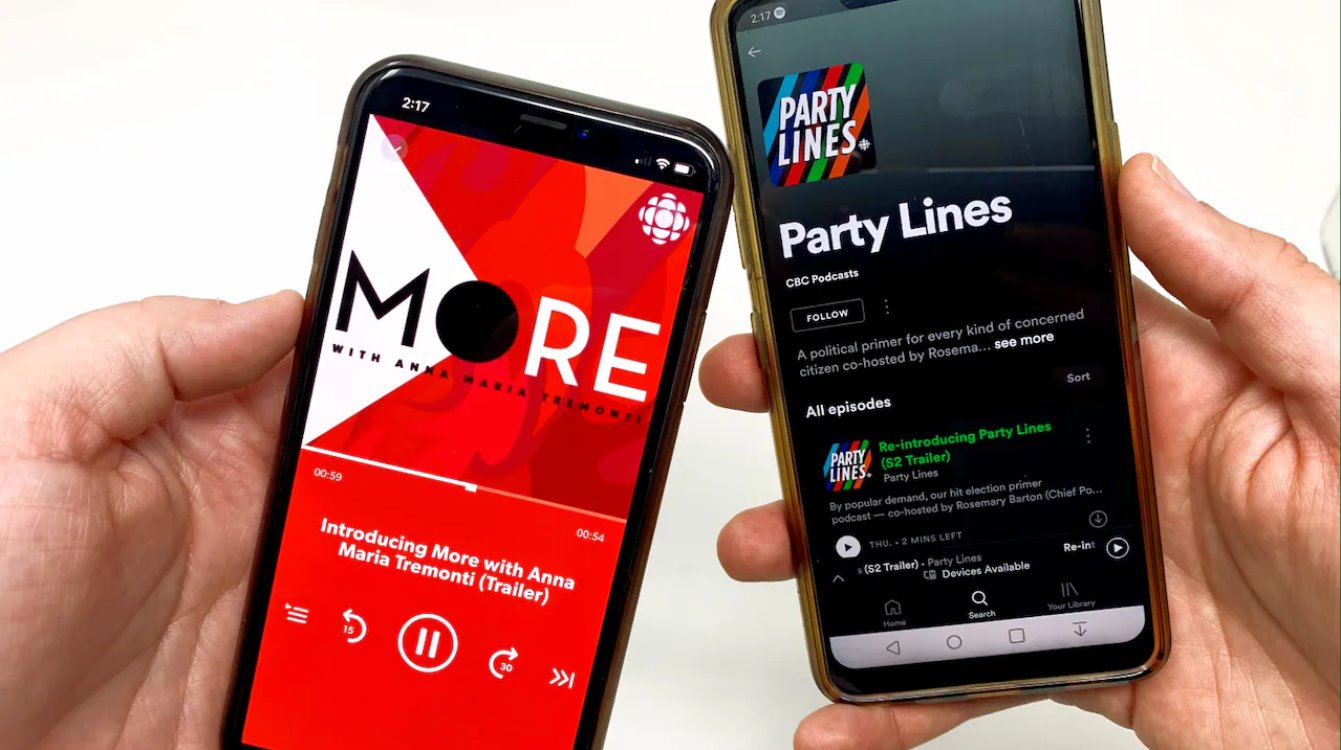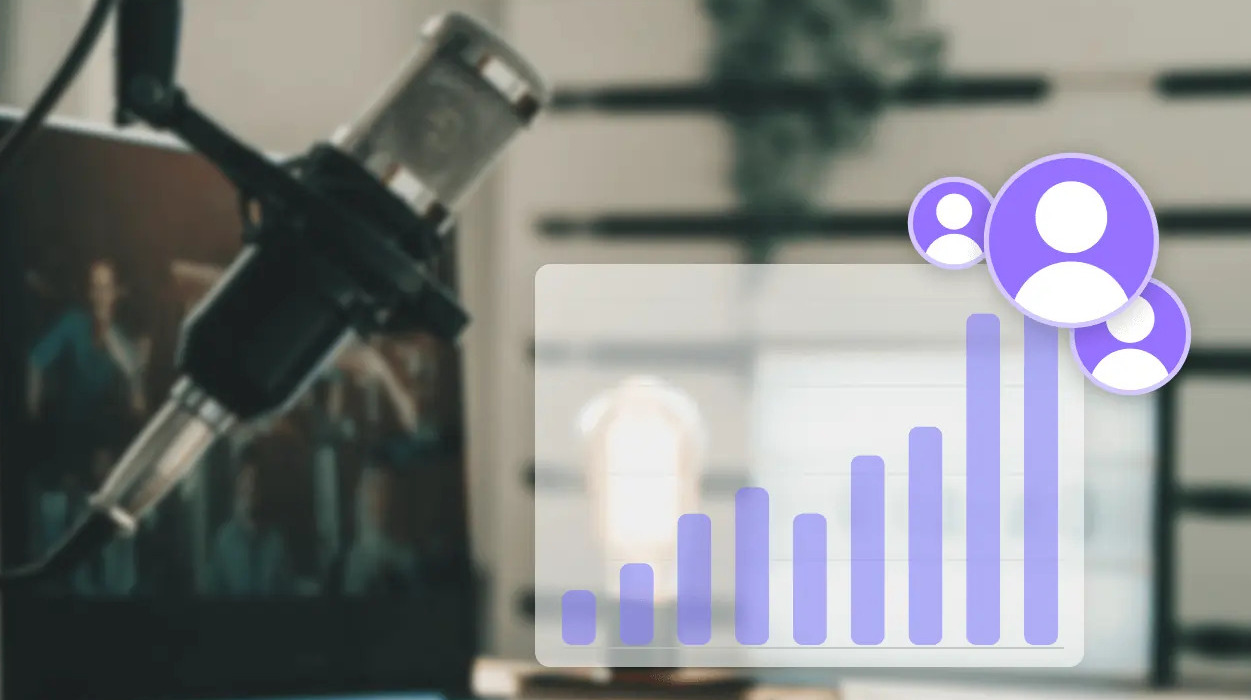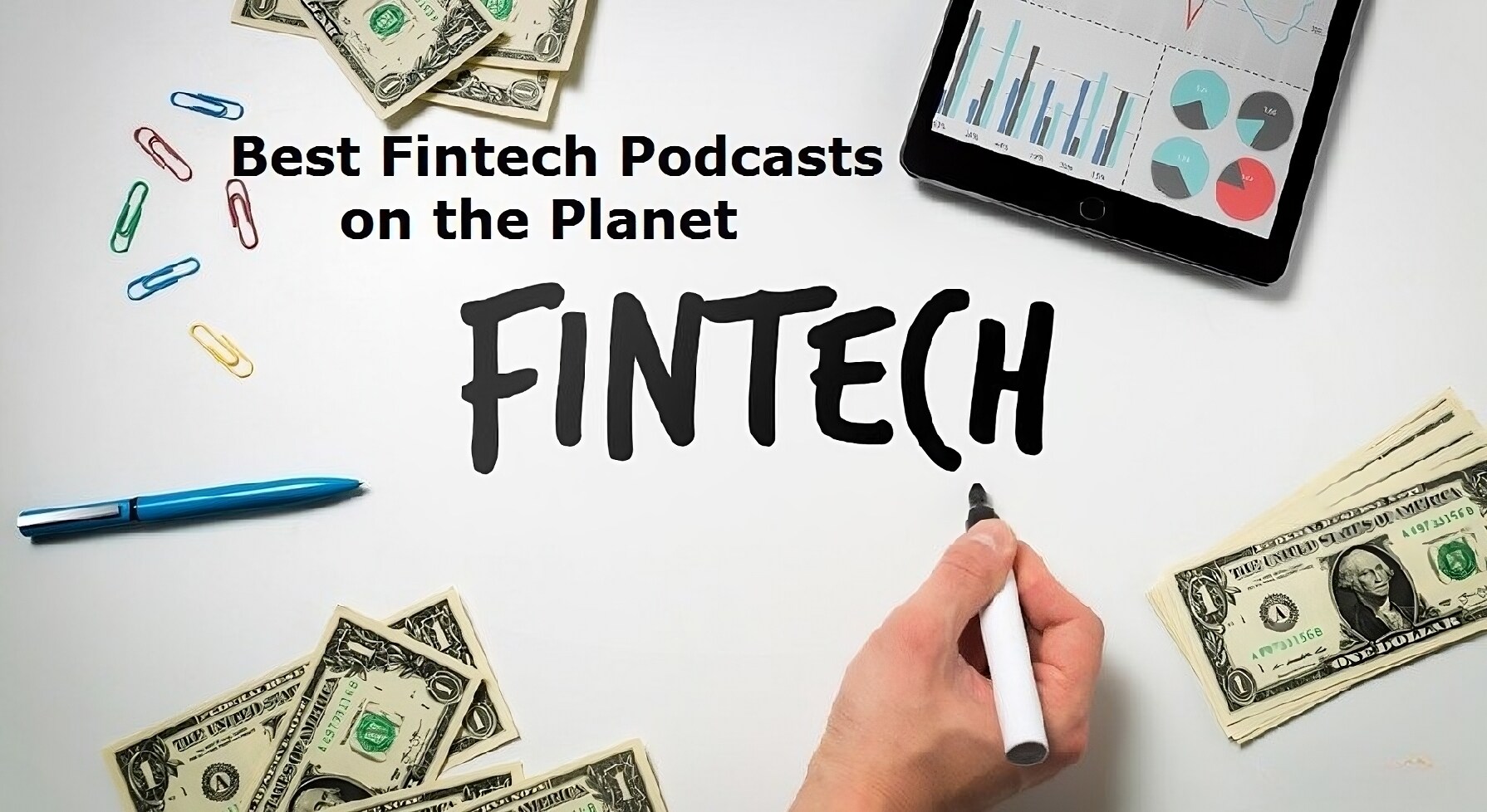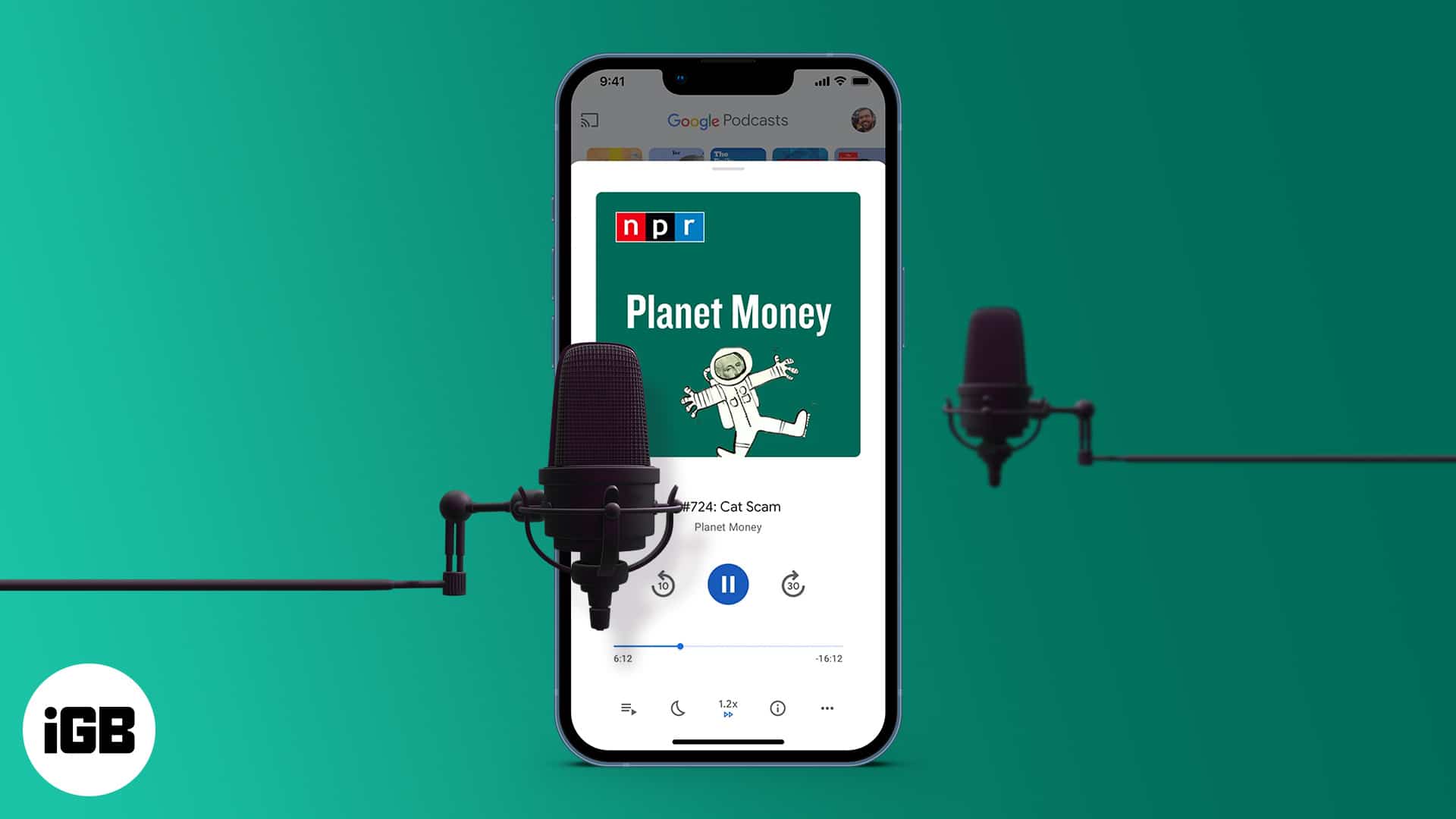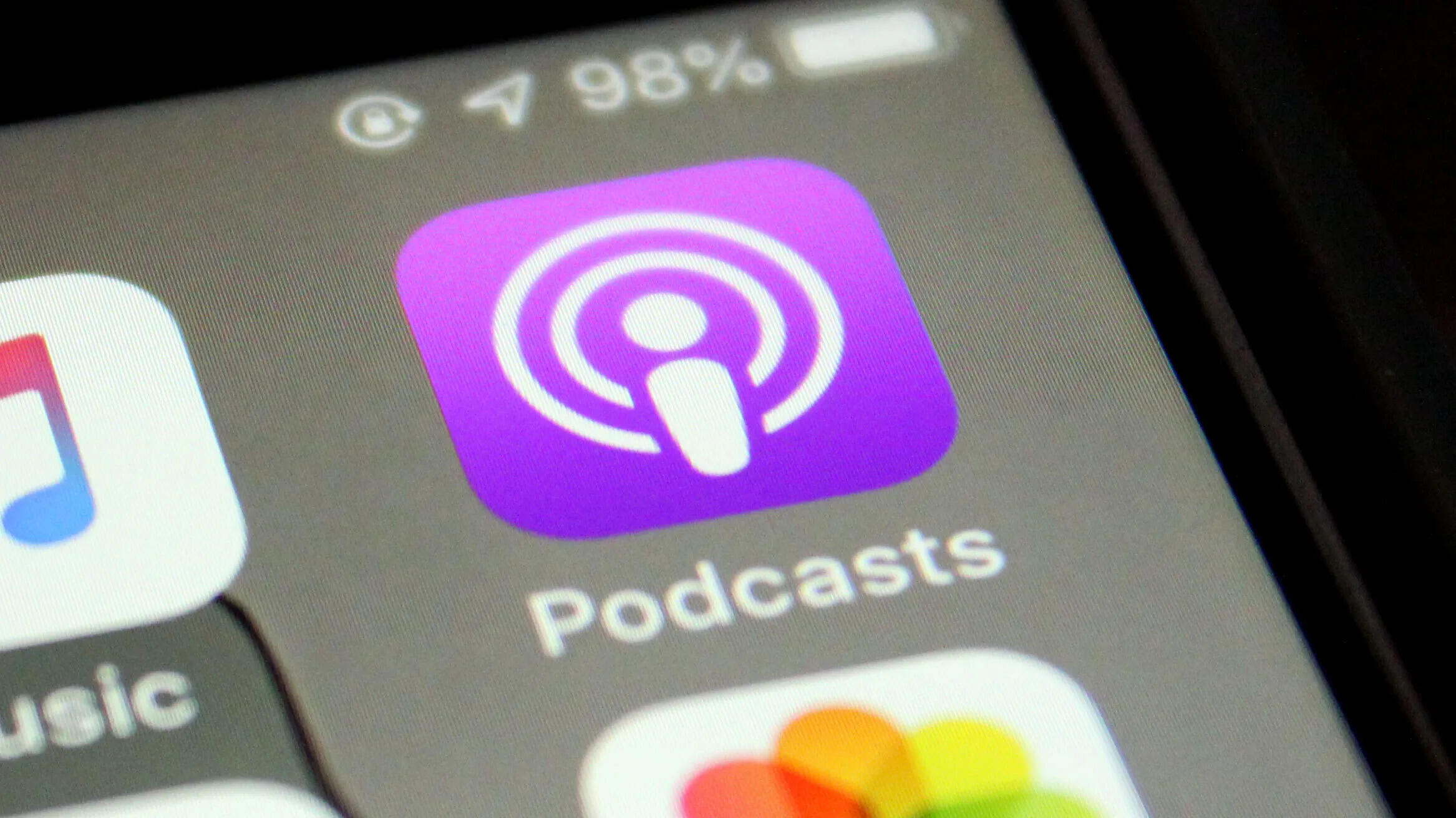Introduction
Welcome to the world of podcasts! Whether you’re a seasoned audio enthusiast or new to the medium, podcasts offer a diverse and exciting range of content for your listening pleasure. From educational podcasts that expand your knowledge to entertaining shows that make you laugh, there’s something out there for everyone. But how do you go about listening to a podcast? In this article, we’ll guide you through the process, step by step.
If you’re not familiar with podcasts, think of them as on-demand radio shows. They cover a wide range of topics, hosted by experts, enthusiasts, or even celebrities, who share their knowledge, insights, stories, and interviews in an audio format. The beauty of podcasts is that you can listen to them at your convenience, whether you’re commuting, doing household chores, or simply wanting to relax and unwind.
So, let’s dive in and discover the different ways you can listen to a podcast. Don’t worry if you’re not tech-savvy – we’ll explain everything in simple terms, making it easy for anyone to get started.
Finding Podcasts
With thousands of podcasts available, finding the ones that match your interests can be daunting. However, several platforms and directories make it easy to discover new podcasts. Here are some effective ways to find the podcasts you’ll love:
- Podcast Directories: Websites like Apple Podcasts, Spotify, Google Podcasts, and Stitcher serve as directories where you can search for podcasts. They provide various categories and genres to explore, making it simple to find topics that pique your interest.
- Recommendations: Ask friends, family, or colleagues for podcast recommendations. They might have some hidden gems that are not as widely known.
- Podcast Networks: Many podcasts are part of networks that curate shows on specific themes or topics. Exploring networks like NPR, TED Radio Hour, or Gimlet Media can help you discover podcasts within a particular niche.
- Social Media: Platforms like Twitter, Facebook, and Reddit have communities of podcast enthusiasts who share recommendations and discuss their favorite shows. Joining these communities can provide valuable insights and help you find new podcasts.
- Online Reviews: Several websites and publications offer podcast recommendations and reviews. Checking out these trusted sources can give you an idea of what podcasts are worth exploring.
Remember, podcast discovery is a personal journey, and it’s okay to try out different shows before finding the ones that resonate with you. Don’t be afraid to explore various genres, as you never know what hidden gems you may find.
Once you’ve found a podcast you’re interested in, the next step is to subscribe or download it so that you can start enjoying the episodes. Let’s dive into the details in the next section.
Subscription and Downloading
Subscribing to a podcast allows you to receive new episodes automatically as soon as they are released. Here’s how to subscribe to a podcast:
- Podcast Apps: Download a podcast app on your smartphone, such as Apple Podcasts for iOS devices or Google Podcasts for Android devices. These apps have extensive podcast libraries and allow easy subscription management.
- Search and Subscribe: Use the search function within the app to find the specific podcast you want to subscribe to. Once you’ve found it, click on the “Subscribe” button to ensure you receive new episodes.
- Notifications and Updates: Most podcast apps give you options to receive notifications for new episodes, so you’ll always be up to date.
Downloading episodes is a great option for offline listening or when you have limited internet access. Here’s how to download podcast episodes:
- Choose a Podcast App: Make sure the podcast app you’re using allows downloading. Most popular podcast apps have this feature.
- Find the Episode: Locate the episode you want to download within the podcast app’s interface.
- Download the Episode: Look for the download button or option beside the episode and click on it. The app will then download the episode to your device for offline listening.
It’s important to manage your podcast subscriptions and downloads to avoid clutter and save storage space on your device. Regularly review your subscribed podcasts and delete episodes you’ve finished listening to.
Now that you know how to subscribe and download podcasts, let’s explore different ways to listen to them on various devices in the next sections.
Streaming Podcasts
If you prefer not to download episodes and want to save storage space on your device, streaming podcasts is a convenient option. Streaming allows you to listen to podcasts on the go without the need for downloading. Here’s how to stream podcasts:
- Podcast Apps: Open your preferred podcast app and navigate to the podcast you want to listen to.
- Select an Episode: Choose the specific episode you’d like to stream from the podcast’s list of available episodes.
- Click Play: Simply click on the play button next to the episode to start streaming it. The podcast app will start buffering and playing the episode in real-time.
Streaming podcasts require a stable internet connection. Keep in mind that if you’re using mobile data, streaming podcasts can consume a significant amount of data. So, it’s advisable to be connected to a Wi-Fi network when streaming to avoid exceeding your data limit or incurring additional charges.
Most podcast apps also offer options for adjusting playback speed, skipping forward or backward, and marking episodes as played or unplayed. Explore the app’s interface to discover these features and customize your listening experience.
Now that we’ve covered streaming, let’s explore how to listen to podcasts on different devices, starting with computers.
Podcast Players
Podcast players are software or applications designed to enhance your podcast listening experience. They provide a user-friendly interface for browsing and managing your podcast subscriptions, as well as additional features for customization. Here are some popular podcast players:
- iTunes: As one of the most widely used podcast players, iTunes offers a vast collection of podcasts for both Mac and Windows users. It allows you to subscribe, download, and organize your podcasts seamlessly.
- Overcast: Overcast is a feature-rich podcast player for iOS users. It offers excellent audio quality, smart recommendations, and intuitive controls for playback.
- Pocket Casts: Available for iOS, Android, and web users, Pocket Casts is known for its sleek design and powerful features. It syncs your podcast subscriptions across multiple devices, allows for variable speed playback, and offers curated podcast recommendations.
- Spotify: In addition to its music streaming service, Spotify also provides a platform for discovering and listening to podcasts. With millions of podcasts available, Spotify offers personalized recommendations and seamless integration with your existing music library.
- Google Podcasts: Google Podcasts is a podcast player available on Android devices and the web. It offers a straightforward interface, personalized recommendations, and the ability to sync subscriptions across devices.
These are just a few examples of podcast players, and there are many more to explore depending on your device’s operating system and personal preferences. Experiment with different apps to find the one that suits you best.
Now that we’ve covered podcast players, let’s move on to how you can listen to podcasts on different devices, starting with computers.
Listening on a Computer
If you prefer to listen to podcasts on your computer, there are several ways to do so. Here are some methods for listening to podcasts on a computer:
- Browser-Based Listening: Many podcast platforms, such as Apple Podcasts and Spotify, have web-based interfaces that allow you to listen to podcasts directly in your browser. Simply visit the website, search for the podcast you want to listen to, and click on the episode to start streaming.
- Podcast Players: If you prefer a dedicated podcast player on your computer, you can download and install applications like iTunes or other third-party podcast players. These players offer a range of features like subscription management, episode downloads, and playback customization.
- Podcast Aggregators: Some websites and applications act as podcast aggregators, collecting podcasts from various sources and allowing you to listen to them in one place. Examples include Stitcher and Overcast, which offer web-based interfaces for listening to your favorite podcasts.
- Podcast Management Software: There are also podcast management software options that provide advanced features for organizing and listening to podcasts on your computer. Examples include Castbox and Clementine, which offer comprehensive controls and customization options.
When listening to podcasts on your computer, you can take advantage of larger speakers or headphones for an immersive listening experience. Additionally, computer-based podcast players often provide more advanced features and organizational tools compared to mobile apps.
Now that you know how to listen to podcasts on your computer, let’s explore how to enjoy podcasts on smartphones and tablets.
Listening on a Smartphone or Tablet
Smartphones and tablets offer a convenient way to listen to podcasts on the go. Here’s how you can enjoy podcasts on your mobile devices:
- Podcast Apps: Download a podcast app from your device’s app store. Popular podcast apps include Apple Podcasts, Google Podcasts, Spotify, and Stitcher. Once installed, open the app and search for the podcast you want to listen to. From there, you can subscribe to the podcast and start streaming or downloading episodes.
- Native Apps: Some devices come with pre-installed native podcast apps that you can use. For example, Apple devices have Apple Podcasts, and some Android devices offer Google Podcasts as the default app. These apps have similar functionalities to third-party podcast apps and allow you to search, subscribe, and listen to podcasts easily.
- Streaming Services: If you already use streaming services like Spotify or Pandora, you can explore their podcast sections. These services often have a wide range of podcasts available for streaming, and you can listen to them alongside your favorite music playlists.
With a mobile device, you have the flexibility to listen to podcasts wherever you are, making it easy to catch up on your favorite shows during daily commutes, workouts, or downtime.
Some podcast apps also offer additional features like personalized recommendations, the ability to create playlists, and automatic episode downloads for offline listening. Explore the settings and options within the app to make your listening experience even more enjoyable.
Now that we’ve covered how to listen to podcasts on smartphones and tablets, let’s explore another popular device for podcast listening: smart speakers.
Listening on a Smart Speaker
Smart speakers, such as Amazon Echo (powered by Alexa) or Google Home (powered by Google Assistant), offer a hands-free and voice-controlled way to listen to podcasts. Follow these steps to enjoy podcasts on your smart speaker:
- Enable Podcast Skills: To listen to podcasts on a smart speaker, you need to enable the podcast skills specific to your device. For example, for Amazon Echo, enable the “Apple Podcasts,” “Spotify,” or “TuneIn” skills, depending on your preferred podcast platform.
- Link Your Account: After enabling the podcast skills, link them to your accounts on the respective platforms. This allows your smart speaker to access your subscribed podcasts and personalized recommendations.
- Play a Podcast: Use voice commands to play podcasts on your smart speaker. For example, say “Alexa, play [podcast name]” or “Hey Google, play [podcast name].” The smart speaker will start playing the requested podcast, either from the latest episode or from where you left off.
Smart speakers offer a convenient way to listen to podcasts while you’re busy cooking, relaxing, or doing household chores. You can pause, resume, skip, or rewind episodes using voice commands, without needing to touch any devices.
Additionally, some smart speakers allow you to connect Bluetooth-enabled devices like headphones or speakers, so you can enjoy podcasts privately or with enhanced audio quality.
Now that we’ve covered listening to podcasts on smart speakers, let’s explore how to listen to podcasts offline for times when you don’t have an internet connection.
Offline Listening
Offline listening is a valuable feature that allows you to enjoy podcasts even when you don’t have an internet connection. This is particularly useful when traveling or in areas with limited or no network coverage. Here are a few methods for offline listening:
- Download Episodes: Many podcast apps, such as Apple Podcasts, Spotify, and Pocket Casts, offer the option to download episodes for offline listening. Simply find the podcast episode you want to listen to, click on the download button, and the episode will be saved to your device for future playback.
- Set Auto-Downloads: Some podcast apps allow you to set up automatic downloads for your subscribed podcasts. This means that new episodes will be downloaded as soon as they become available, ensuring you always have fresh content for offline listening.
- Podcast Aggregators: Certain podcast aggregators, like Stitcher, allow you to create custom playlists or stations that you can download for offline listening. This allows you to curate a selection of episodes that will be available without an internet connection.
By taking advantage of the offline listening feature, you can enjoy podcasts on airplanes, during road trips, or in remote areas without worrying about internet connectivity. It’s essential to manage your offline downloads to save storage space on your device and remove episodes you have already listened to.
Now that you know how to listen to podcasts offline, let’s discuss managing your podcast subscriptions and episodes in the next section.
Managing Podcasts
As you explore and subscribe to various podcasts, it’s important to effectively manage your podcast library to ensure a streamlined listening experience. Here are some tips for managing your podcast subscriptions and episodes:
- Subscription Organization: Regularly review your podcast subscriptions and unsubscribe from shows that no longer interest you. This will help keep your podcast library clutter-free and ensure you only receive updates from podcasts you truly enjoy.
- Episode Management: Remove episodes that you’ve already listened to or no longer wish to keep. Most podcast apps provide options to mark episodes as played or delete them from your device. Clearing out old episodes will free up storage space and make it easier to find new content.
- Create Playlists: Some podcast apps allow you to create playlists or episode queues. Utilize this feature to organize episodes based on themes, priority, or listening preferences. Playlists are particularly useful for long drives or when you want to listen to specific episodes in a specific order.
- Episode Bookmarking: If you need to pause an episode and resume listening at a later time, use the bookmark or save feature available in most podcast apps. This will allow you to easily pick up where you left off without having to remember the timestamp manually.
- Podcast Recommendations: Explore the podcast app’s recommendation features or seek recommendations from friends, online communities, or trusted sources. This will help you discover new podcasts that align with your interests and introduce you to fresh content.
By actively managing your podcast library, you can ensure that you have a curated collection of podcasts that match your preferences and keep your listening experience enjoyable and organized.
Now that we’ve covered managing podcasts, let’s wrap up and summarize what we’ve learned about listening to podcasts.
Conclusion
Listening to podcasts has become increasingly popular, offering a vast and diverse range of content accessible at your fingertips. In this article, we’ve explored the different ways you can listen to podcasts, from finding and subscribing to your favorite shows to enjoying them on various devices.
We discussed the importance of finding podcasts that align with your interests, using podcast directories, recommendations, social media, and online reviews to discover new shows. We then explored the subscription and downloading process, both on computers and mobile devices, as well as the option to stream podcasts without downloading them.
We delved into the world of podcast players, including popular apps like iTunes, Overcast, Pocket Casts, Spotify, and Google Podcasts. These players offer features for managing subscriptions, customizing playback, and organizing your podcast library.
We also explored listening to podcasts on different devices, such as computers, smartphones, tablets, and smart speakers. We discussed the benefits of offline listening, allowing you to enjoy podcasts even without an internet connection, and provided tips for effectively managing subscriptions, episodes, playlists, and recommendations.
Whether you’re a podcast enthusiast or new to the medium, the availability and accessibility of podcasts make it easy to dive into a world of knowledge, entertainment, and inspiration. So, grab your headphones, choose your favorite podcast app, and start exploring the countless amazing shows that await you.
Happy listening!










